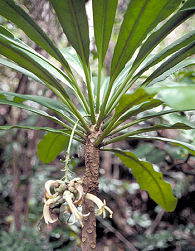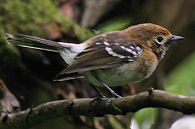
This page last revised 31 August 2006 -- S.M.Gon III
Introduction
Ecoregion
Conservation Targets
Viability
Goals
Portfolio
TNC Action Sites
Threats
Strategies
Acknowledgements
▫
Tables
Maps & Figures
CPT Database
Appendices
Glossary
Sources
Wai‘anae Conservation Area Profile
Major Habitat Type: Tropical Moist
Stratification Unit:O‘ahu (comprised of the single island of O‘ahu, see below)The island is noted for a high level of botanical endemism.
Island: O‘ahu; the third largestisland of the archipelago, ca 2.2 million years old, maximum elevation Ka‘ala, Wai‘anae Mountains, 1,220 m(4,003 ft). Bearing two conservation areas: Wai‘anae and Ko‘olau (maximum elevation, Konahuanui, 946 m (3105 ft),corresponding to the two main shield volcanoes that comprise theisland. Most populous island in the archipelago, with >85% of thestate's human population.
Significance: TheWai‘anae Conservation Area is comprised of ecologicalsystems from lowland to montaneelevations. The steep summit area maintains high viability systems,serves watershed functions, and provides habitat for manynatural communities and species. The Wai‘anae Mountains rivals Kaua‘i in richness of endemic species of flowering plants.
ConservationStatus: The Wai‘anae Conservation Area is protected and managed by acombination of private and public protected areas, including the Mt.Ka‘ala StateNatural Area Reserve, the Pahole State Natural Area Reserve, the State Forest ReserveSystem, The Nature Conservancy's Honouliuli Preserve and the state Conservation District. Active conservation management is also underway via the Army's Ecosystem Management Program,involving endangered species and habitat across the Wai‘anae andKo‘olau conservation areas. Such actions are included in adiscussion of conservation strategies for O‘ahu.
A Conservation Action Plan for Wai‘anae has not yet been drafted.
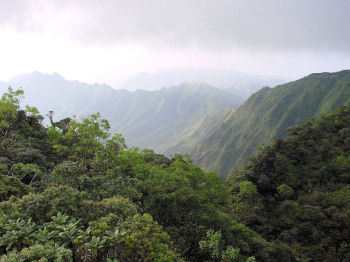
Native montane wet forest on the summit of Ka'ala, Wai'anae Mountains
Conservation Targets:
Ecological Systems: Three ecological systems of Wai‘anae were selected as conservationtargets, each bearing nested natural communities and species (discussedbelow).
| System | Size | Condition | LC | Overall |
| Montane Wet | POOR | GOOD | VERY GOOD | FAIR |
| Lowland Wet | POOR | POOR | VERY GOOD | FAIR |
| Wet Cliff | POOR | GOOD | VERY GOOD | FAIR |
| Dry Cliff | POOR | FAIR | FAIR | FAIR |
Special Ecological Features:
- Waterbird Concentration
- Natural Communities:
‘Ōhi‘a/Mixed
‘Ōhi‘a/Mixed Shrub Montane
‘Ōhi‘a/‘Ōlapa Montane
Koa/‘Ōhi‘a Lowland Mesic
O‘ahu Diverse Mesic
Mixed Fern/Shrub Wet Cliff Community
Mixed Shrub Dry Cliff Community
- Native species:
There are manyconstituent native species that comprise the natural communities of the ConservationArea. Highlights include over 60 rare/endangered plant species, over 350 endemicplant species, and likely thousands of endemic invertebrate species.
Major Threats:Uncontrolledferal ungulates (primarily pigs, goats, deer); and a large variety ofinvasivealien plants, particularly Christmas berry (Schinus terebinthifolius), molasses grass (Melinis minutiflora), Koster's curse (Clidemia hirta), and strawberry guava (Psidium cattelianum). Alien grasses and dry to mesic settings contribute to a large wildfire threat.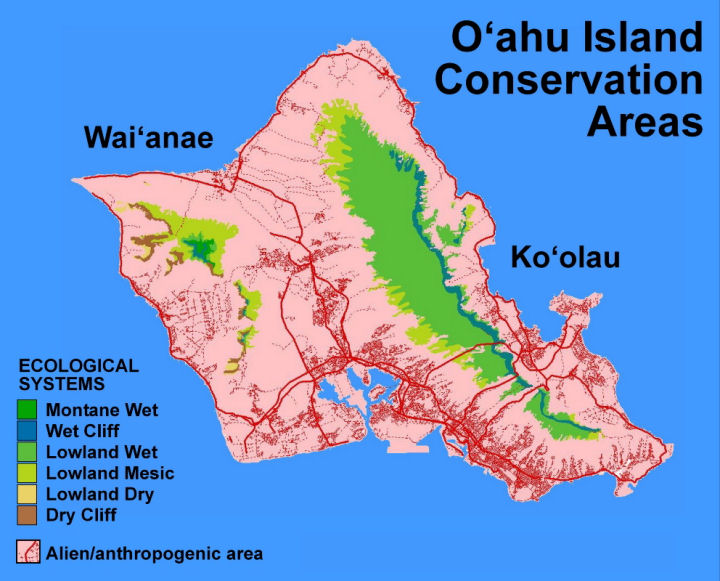
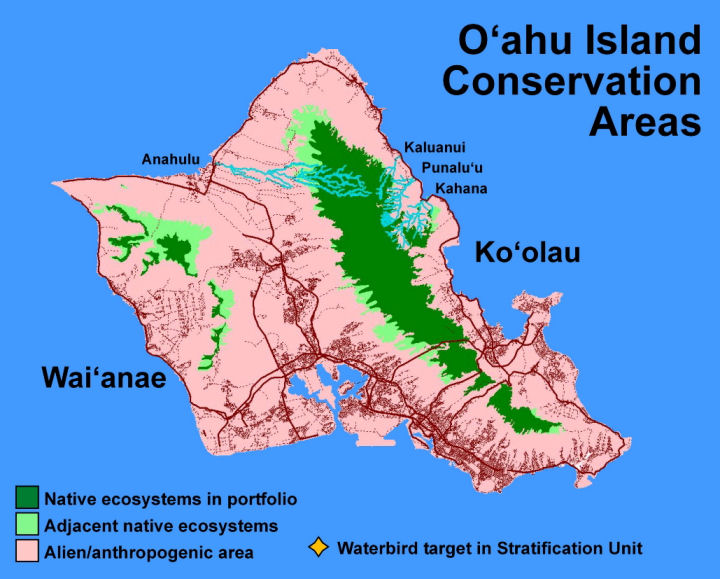
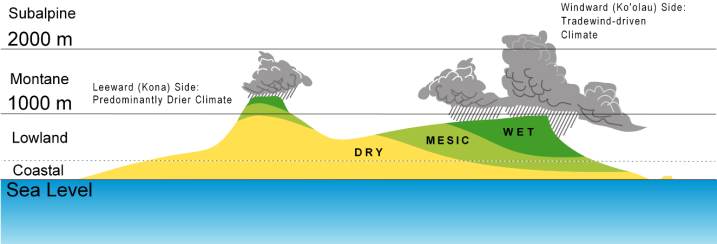
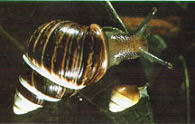 Endangered tree snail
Endangered tree snail 